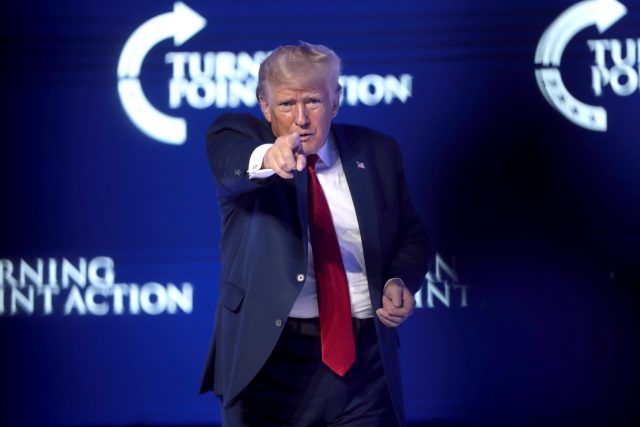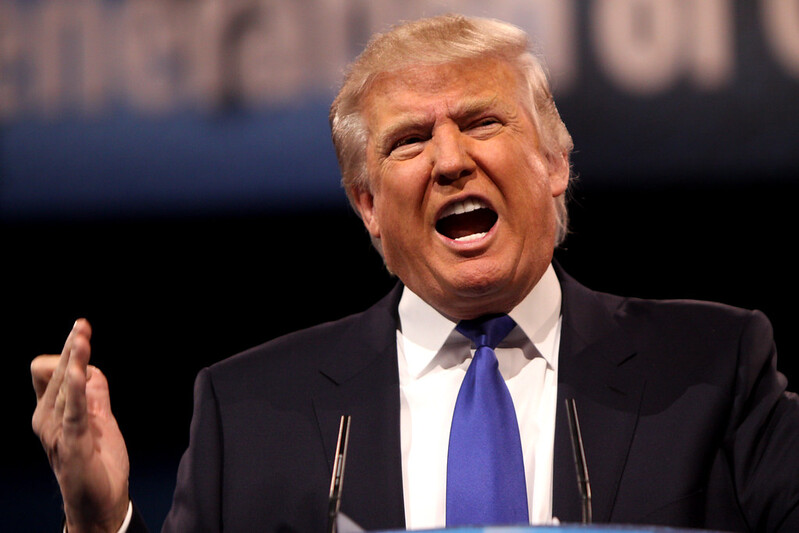A public-private deal aims to bring microchip manufacturing back to American soil — and deliver taxpayer returns in the process.
A Strategic Bet on Semiconductors
President Donald Trump announced Friday that chipmaker Intel agreed to give the U.S. government a 9.9% equity stake, valued at $8.9 billion. The move, the first of its kind under the CHIPS and Science Act, is intended to strengthen domestic semiconductor capacity and ensure that federal subsidies come with direct returns for taxpayers.
“They’ve agreed to do it, and I think it’s a great deal for them,” Trump told reporters during a briefing. The agreement follows internal administration discussions about using existing Commerce Department funding to acquire a stake in Intel, an effort confirmed earlier in the week by Commerce Secretary Howard Lutnick.
The stake is expected to be funded through the CHIPS Act and the Department of Defense’s Secure Enclave program. It will be a passive investment, meaning the government will not receive board seats, governance rights, or special access to information.
Intel Under Scrutiny
Trump also shed light on how the agreement came about — including a conversation with Intel CEO Lip-Bu Tan, whose background had drawn criticism from Capitol Hill.
Earlier this month, Sen. Tom Cotton (R-AR) raised alarms over Tan’s past leadership of Cadence Design Systems, which in 2008 pleaded guilty to illegally exporting chip design software to a Chinese military university. Tan’s investments in China-based firms had also raised national security concerns.
“I said, ‘Well that’s right, he should resign,’” Trump said. “And he came in, he saw me, we talked for a while. I liked him a lot. I thought he was very good. I thought he was somewhat a victim, but, you know, nobody’s a total victim, I guess.”
Following their meeting, Trump floated the idea that Intel should offer a 10% equity share to the U.S. government.
“He said, ‘I would consider that,’” Trump recalled. “Intel has been left behind, as you know, compared to [Nvidia CEO] Jensen [Huang] and some of our friends.”
Commerce: “We Can’t Rely on Taiwan”
Commerce Secretary Lutnick emphasized that the deal has more to do with national security than boardroom politics. In an interview on CNBC’s Squawk Box, Lutnick pointed out that Taiwan, which manufactures over 90% of the world’s most advanced semiconductors, sits just 80 miles from China.
“We cannot rely on Taiwan, which is 9,500 miles away from us and only 80 miles from China,” Lutnick said. “So, you can’t have 99 percent of leading-edge chips made in Taiwan. We want to make them here.”
He noted that the administration wants to ensure that U.S. companies are capable of producing next-generation chip nodes domestically.
“One of those pieces is, it would be lovely to have Intel be capable of making a U.S. node or a U.S. transistor — driving that in America,” Lutnick added.
A Rare Bipartisan Signal
The move drew support across ideological lines, with Sen. Bernie Sanders (I-VT) praising the basic premise: that if the federal government is handing out billions in subsidies, the public should see a share of the profits.
“No. Taxpayers should not be providing billions of dollars in corporate welfare to large, profitable corporations like Intel without getting anything in return,” Sanders said. “If microchip companies make a profit from the generous grants they receive from the federal government, the taxpayers of America have a right to a reasonable return on that investment.”
Not Everyone on Board
Some conservatives pushed back against the concept of government equity stakes in private corporations.
Sen. Rand Paul (R-KY) called the proposal a “terrible” precedent.
“If socialism is government owning the means of production, wouldn’t the government owning part of Intel be a step toward socialism?” Paul wrote in a post on X.
Despite the criticism, the administration has defended the agreement as a narrowly targeted investment — not a takeover — intended to align taxpayer contributions with long-term national and economic security.
Looking Ahead
The Intel stake marks a sharp departure from traditional federal industrial policy. Rather than simply issuing grants or tax breaks, the administration is pursuing a more transactional model: public money in, public equity out.
For the Trump administration, the goal is clear — to use government leverage to secure America’s position in next-generation chip manufacturing and reduce dependence on overseas supply chains.
READ NEXT: When Loyalty Breaks: Hegseth Moves Against Key Military Leader







Govt shoiuldnt own companies
Invest Yes
Own NO